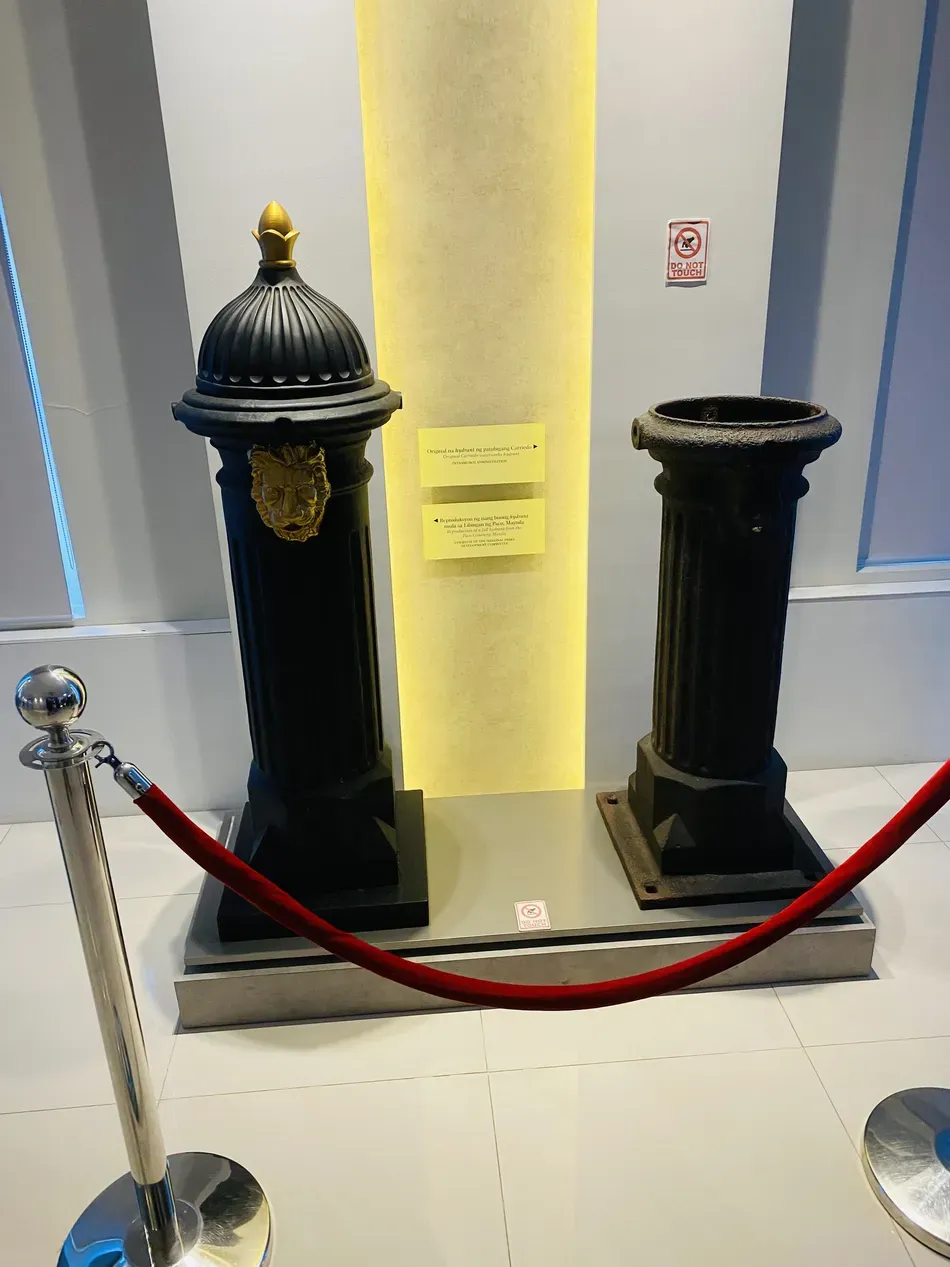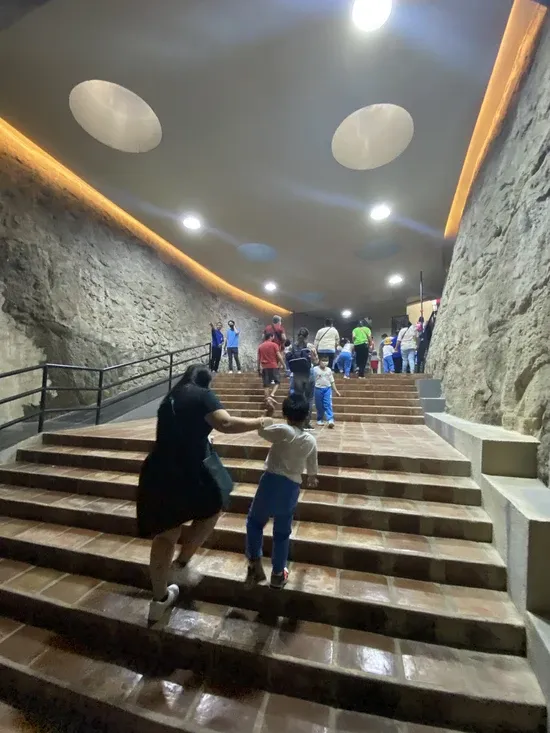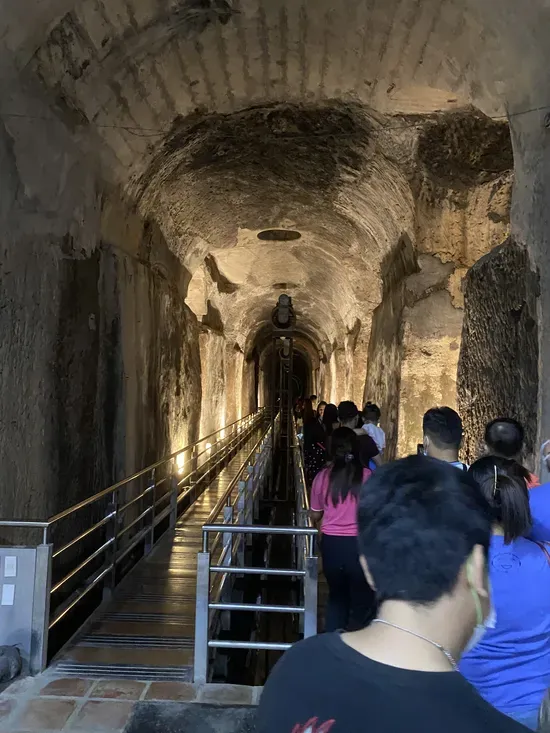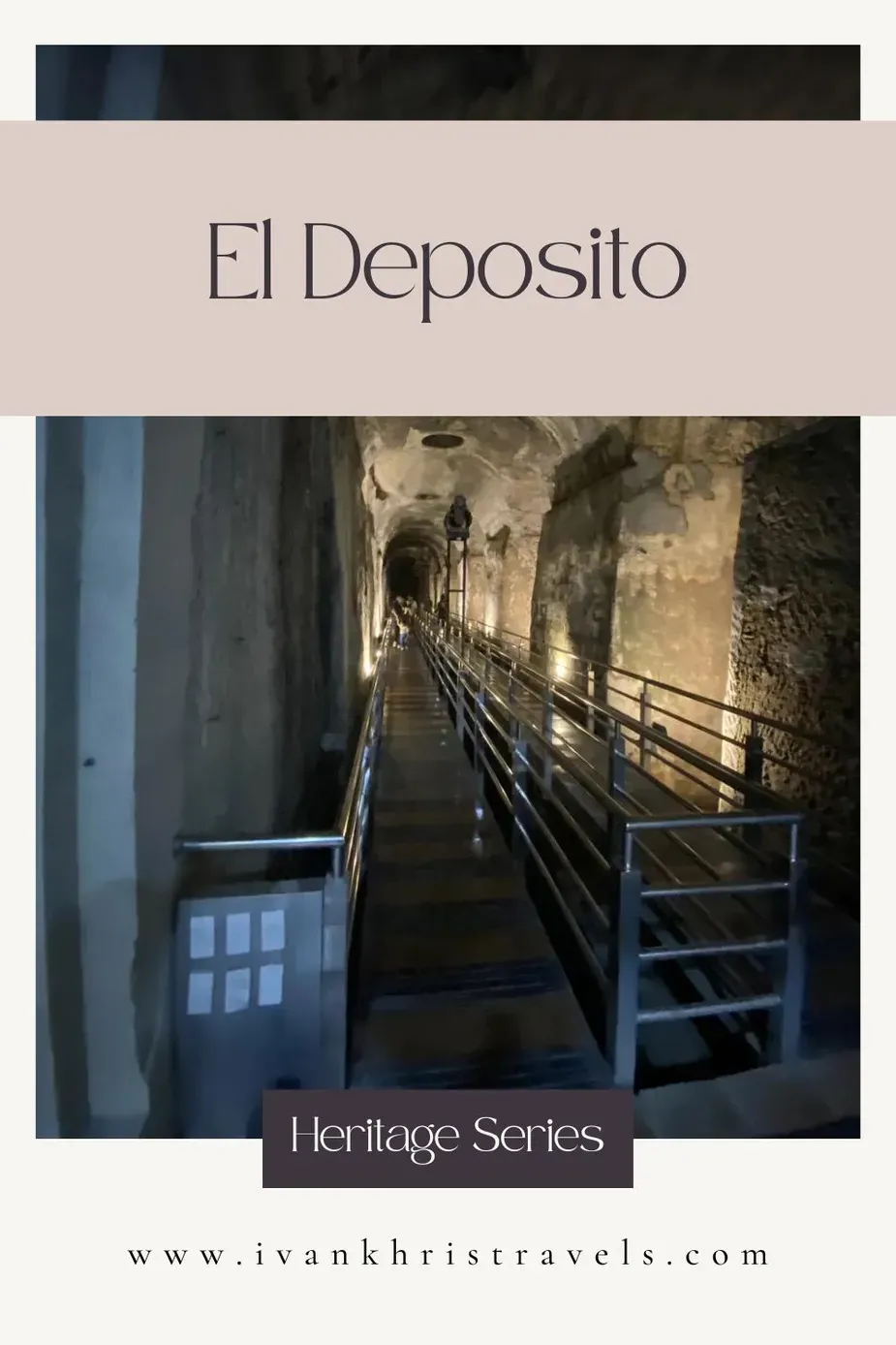Join us as we explore the historic Spanish-era water reservoir in San Juan City called El Deposito.
El Deposito (translated as “The Deposit” in English) is a Spanish-era
underground water reservoir located in San Juan City, Metro Manila. As
someone who loves visiting historical places, I consider the public
unveiling of El Deposito as one of the most awaited events of 2020. However,
because of the COVID-19 pandemic and the quarantine restrictions, the
reopening of El Deposito was postponed until 2021. I quite forgot about my
initial plan to visit El Deposito but as luck would have it, a trip to
Pinaglabanan Shine where it was located, was included in Miguel’s
educational tour itinerary in 2023.
Heritage Series: El Deposito
A little bit of history
El Deposito
was built to store and provide water to residents of Intramuros and its
adjacent areas. It consisted of chambers where water was kept fresh and
potable.

|
| A model of the Carriedo Fountain in Museo El Deposito |
It completed in was part of the Carriedo Waterworks and was completed in 1882
because of a generous donation from
Francisco Carriedo, a military officer, politician, and philanthropist who made his fortune in
the galleon trade.
As a philanthropist, his donation was intended to benefit the poor, who had no
access to clean drinking water during that time, as well as religious
organizations. While Carriedo did not live to see the completion of El
Deposito and the Carriedo Waterworks, he left a legacy that lived for more
than a century.
El Deposito sourced water from the Marikina River and supplied water to
houses, hydrants, and fountains in Manila.

|
| Old hydrant |
El Deposito was part of the historic Battle of San Juan del Monte in which the
Katipuneros led by Andres Bonifacio attempted to seize the reservoir and
cripple the water supply in Manila. Throughout history, El Deposito was used
for different purposes other than as a water reservoir.
Seemingly forgotten by time, the UP Archeological Studies, the National
Historical Commission, and the local government of San Juan City exerted
efforts to excavate, clean, and rehabilitate El Deposito for its eventual
opening as a historic tourist attraction within Pinaglabanan Shrine.
Our experience at El Deposito
To better appreciate El Deposito and its significance in Philippine history,
you have to know its full story. As such, during Miguel’s education tour, we
visited Museo El Deposito first where there are photos of the old waterworks
system of Manila. There were also artifacts of hydrants and water containers,
as well as photos depicting life in old Manila that provided a glimpse of what
it was like to live during those days.
After our tour of Museo El Deposito, we went down to the underground chamber.
The steps leading to the reservoir were wide but as we went down, the space
narrowed down. The stone walls were imposing, and the ceiling was high, but it
was dimly lit.
If not for the other people who were with us at that time, I would’ve felt
claustrophobic because of the dark and eerie underground hall. Just the same,
I was in awe as we walked inside the main chamber, and I imagined the water
that filled the smaller compartments. I thought it was also a great
engineering feat to be able to build such an intricate water system and
operate it without the use of modern machines.
It took us around 20 minutes to explore El Deposito, picture-taking included.
All in all, it was an unforgettable and educational experience for us to
explore such a historic location.
Other important information
Is it safe for children to visit El Deposito?
Yes, it's safe for children to visit the El Deposito chambers. However, you may want to bring a face mask with you because, as the guard at the entrance cautioned, there is a probability that there are some gases trapped inside the chambers that may either have an off smell or might cause slight dizziness. We didn't experience anything adverse though.
What is the opening and closing hours of El Deposito?
Museo El Deposito is open from 9AM to 4PM every day except Monday.
What do I need to bring when I visit El Deposito?
You might want to bring extra shirts and a bottle of drinking water in case you and your children get sweaty and thirsty. Also, wear comfortable footwear during your visit to El Deposito.
PIN THIS POST
More stories:
- Heritage Series: the all-steel San Sebastian Church
- Heritage Series: Immaculate Conception Cathedral (Puerto Princesa City, Palawan)
- Heritage Series: the Filipino Entrepreneurs Sculpture
- Heritage Series: Pagsanjan Arch in Laguna
- Heritage Series: Sacred Heart Parish - Shrine in Kamuning, Quezon City
- Heritage Series: Poblacion, the Old District of Makati
This post may contain affiliate links, including those from Amazon Associates, which means that if you book or purchase anything through one of those links, we may earn a small commission but at no extra cost to you. All opinions are ours and we only promote products that we use.
Download a free copy of my Churches of Nueva Ecija eBook HERE!





Thank you for sharing this very informative blog. such a wonderful historical place to visit with the family.
ReplyDeleteIsa ito sa mga yaman na buhay at maipagmamalaki natin till now
ReplyDelete